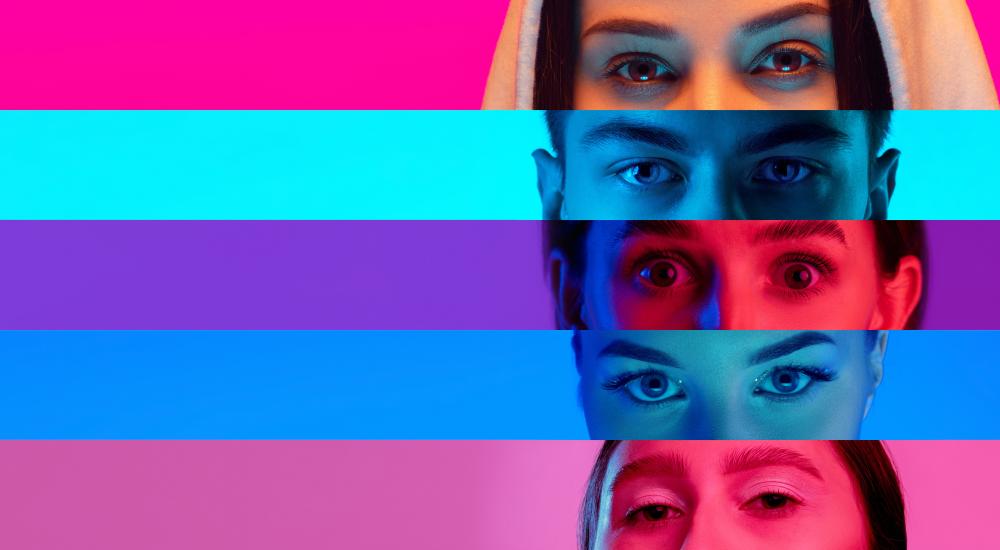Cultivating a More Diverse Leadership

International education has sometimes been dogged by a reputation as something that wasn’t open to everyone.
“For a long time, the perception was that it was a reserved space for the elite,” says Anthony Pinder, vice provost for internationalization and equity at Emerson College. “Historically, who is studying abroad or gets to come here? For the most part, it’s been the highly privileged, but that’s changing.”
Part of that change is being brought about by increasing diversity among staff. “It’s good practice across campus that you hire a diverse staff so that when students come in, they feel they have a connection in common,” says Kira Espiritu, assistant provost for international affairs and director of international studies abroad at the University of San Diego.
The challenge for senior international officers (SIOs) and for international education in general is not only how to foster greater diversity among staff, but how to translate that effort into greater diversity among leadership—both on campus and in the profession. Though there has been progress to cultivate a more diverse body of international education professionals, stakeholders call for a better understanding of the obstacles involved. Assessing the current landscape and working across campus-wide channels to improve hiring practices and development opportunities can lead to a more equitable future.
A Starting Point
The need to have greater diversity among leadership in international education has as much to do with students as it does with professionals working in the field. “In order to diversify our student mobility, we must see some change in our leadership,” says Jewell Winn, who serves as both executive director for international programs and chief diversity officer at Tennessee State University.
By studying the typical ways in which international education professionals are promoted or hired, leaders can begin to address methods of change. Unlike some sectors, leaders in international education often rise through the ranks of international office staff. Building a more diverse staff in the international office is a way to cultivate a stronger pool of staff to develop into leaders as a starting point.
“One of the things I’m really proud of in the field is that, when I started out two decades ago as an SIO, oftentimes I would be the only person of color in settings, or just one of a few. I’m seeing that change pretty dramatically.” —Anthony Pinder
Still, Pinder notes that things are changing. “One of the things I’m really proud of in the field is that, when I started out two decades ago as an SIO, oftentimes I would be the only person of color in settings, or just one of a few,” he says. “I’m seeing that change pretty dramatically. That’s been wonderful to experience.”
Defining Diversity
While many people automatically think that diversity means racial diversity, that’s just one component for overall diversity goals. Leaders from different backgrounds can broaden the vision for international education by bringing a variety of viewpoints to it. It helps people to consider obstacles and opportunities they may not be aware of and create programming that anticipates the needs of more students.
“Diversity is not just racial diversity but background diversity,” says Pinder. “It’s fun to be in a room with folks from a different perspective.”
Winn agrees that the emphasis on race is too narrow.
“A lot of times, people want to focus the narrative around race, and it’s so much more than that because of the wide range of diversity of our world,” she says.
Winn notes as an example that, as a late baby boomer, she sees differently than her children, who are millennials. “I was raised in an era of the civil rights movement, so I have a different perspective,” she says. “My kids don’t see as much of a challenge as I do.”
“A lot of times, people want to focus the narrative around race, and it’s so much more than that because of the wide range of diversity of our world.” —Jewell Winn
Espiritu says that diversity in leadership should also extend to lived experience, including people who are first-generation students like she was.
“I remember calling my parents on a pay phone and saying, ‘I’m going to study abroad,’ and it was such a weird concept for them,” she recalls. “Diversity in leadership and staffing can help you develop programs and materials to reach those [different] populations.”
Creating a Pipeline of Diverse Staff
Because today’s staff are tomorrow’s leaders, hiring is an especially important element in developing new leaders. Espiritu says that current leaders can find more diverse employees by not relying on their usual guidelines for new hires.
“Think outside the box of where we find people,” she says. “The nuts and bolts of the job are teachable. I can’t teach you the personal skills and empathy to students or the life experience you need for the job.”
Espiritu says that she’s had great success with people whose resumes aren’t academically focused but instead come from such industries as hospitality.
Pinder says that it’s incumbent upon SIOs to make sure that their hiring practices take diversity goals into account in order to develop new leaders. “It’s in the job description or how we promote certain searches,” he says.
“Think outside the box of where we find people. The nuts and bolts of the job are teachable. I can’t teach you the personal skills and empathy to students or the life experience you need for the job.” —Kira Espiritu
Hiring is just the first step. Once staff are hired, investing in their professional development is crucial to creating future leaders. “We have to cultivate a pipeline of talent,” says Pinder. “What are we doing around professional development for junior staff of color so that they are competitive later in their career?” he asks.
Identifying barriers that have prevented marginalized people from participating in development opportunities in the past directly informs how to create pathways or plans to address those barriers.
Espiritu says that encouraging staff to take the lead on something that particularly interests them is a good next step.
“You have to allow people to develop their own passion projects,” she says. “When folks design something and take ownership of it, it allows for a creative outlet for something they feel really strongly about. Those are some of the best attended programs that we have.”
Espiritu also suggests that staff have flexibility in choosing professional development opportunities. “Let the person choose what is most relevant to them, instead of having all of us go to the same conference,” she says. “Maybe they want to attend a webinar series around restorative justice.”
The Long-Term View
Winn knows firsthand that the increasing diversity in international education requires long-term, sometimes uncomfortable work. “I [was] at an AIEA (Association of International Education Administrators) conference, and I [could] count the number of Black people on one hand,” she recalls. “I challenged us to ask what the conference should look like in 5 or 10 years.”
Winn was invited to join the group’s committees and eventually a task force that addressed increasing diversity. Now as president of AIEA, Winn says the recommendations from the task force are rolling out.
“Diversity needs to be embedded in a strategic plan,” she says. “Those are steps that not all organizations are willing to take. You can’t just check off a list and say, we’ve got a diversity plan. It’s an every day, every minute opportunity for us to change the way we think about differences.”
“You can’t just check off a list and say, we’ve got a diversity plan. It’s an every day, every minute opportunity for us to change the way we think about differences.” —Jewell Winn
For diversity in leadership to increase it will require more than just the efforts of committed SIOs. “It’s everyone’s responsibility,” argues Pinder. “It can be exhausting to be both the subject and the object of diversity, equity, and inclusion. It’s the senior leadership team’s job to have the moral courage and will to dismantle the barriers within the community. That takes more hands on deck than just a few DEI colleagues.”
At present, however, Pinder says that universities lack an organized way to promote the kind of leadership diversity that international education—or higher education in general—needs.
“I would love to see more coordinated strategies around how to improve diversity and leadership on campus,” he says. “As someone passionate about it and one of the few leaders in the field with the title I have, I’m spending a lot more time these days trying to figure out proactive strategies to improve diversity in both leadership ranks and the field—what that looks like, what that means, and an honest assessment of what the barriers are. For me that’s really important.”
Winn stresses that creating a more diverse leadership in international education will require the buy-in of campus leadership because of the commitment to change that is required.
“I’m spending a lot more time these days trying to figure out proactive strategies to improve diversity in both leadership ranks and the field—what that looks like, what that means, and an honest assessment of what the barriers are. For me that’s really important.” —Anthony Pinder
“As we’re looking to prepare the next generation of leaders, we have to unlearn some stuff and learn some stuff that will make us uncomfortable,” she says. “These are the conversations that we have to have with leadership. If the presidents of our institutions and boards of trustees are not on board, it’s like climbing Mt. Everest with a jump rope.”
However, there will never be a single strategy to address the need for greater diversity, because each campus has its own specific needs, cautions Winn. “Everyone wants a solution, but every solution is different,” she says.
Ultimately, says Pinder, a more diverse leadership will mean a different kind of leadership.
“From a perspective of practice, diversity in leadership moves at a pace of trust,” he says. “Leadership should leverage diversity to intervene in situations of injustice in the workplace. It should also be in a position to utilize all the tools for creative solutions consistent with the times we’re living in now. Our leadership should reflect that.” •
About International Educator
International Educator is NAFSA’s flagship publication and has been published continually since 1990. As a record of the association and the field of international education, IE includes articles on a variety of topics, trends, and issues facing NAFSA members and their work.
From in-depth features to interviews with thought leaders and columns tailored to NAFSA’s knowledge communities, IE provides must-read context and analysis to those working around the globe to advance international education and exchange.
About NAFSA
NAFSA: Association of International Educators is the world's largest nonprofit association dedicated to international education and exchange. NAFSA serves the needs of more than 10,000 members and international educators worldwide at more than 3,500 institutions, in over 150 countries.
NAFSA membership provides you with unmatched access to best-in-class programs, critical updates, and resources to professionalize your practice. Members gain unrivaled opportunities to partner with experienced international education leaders.














